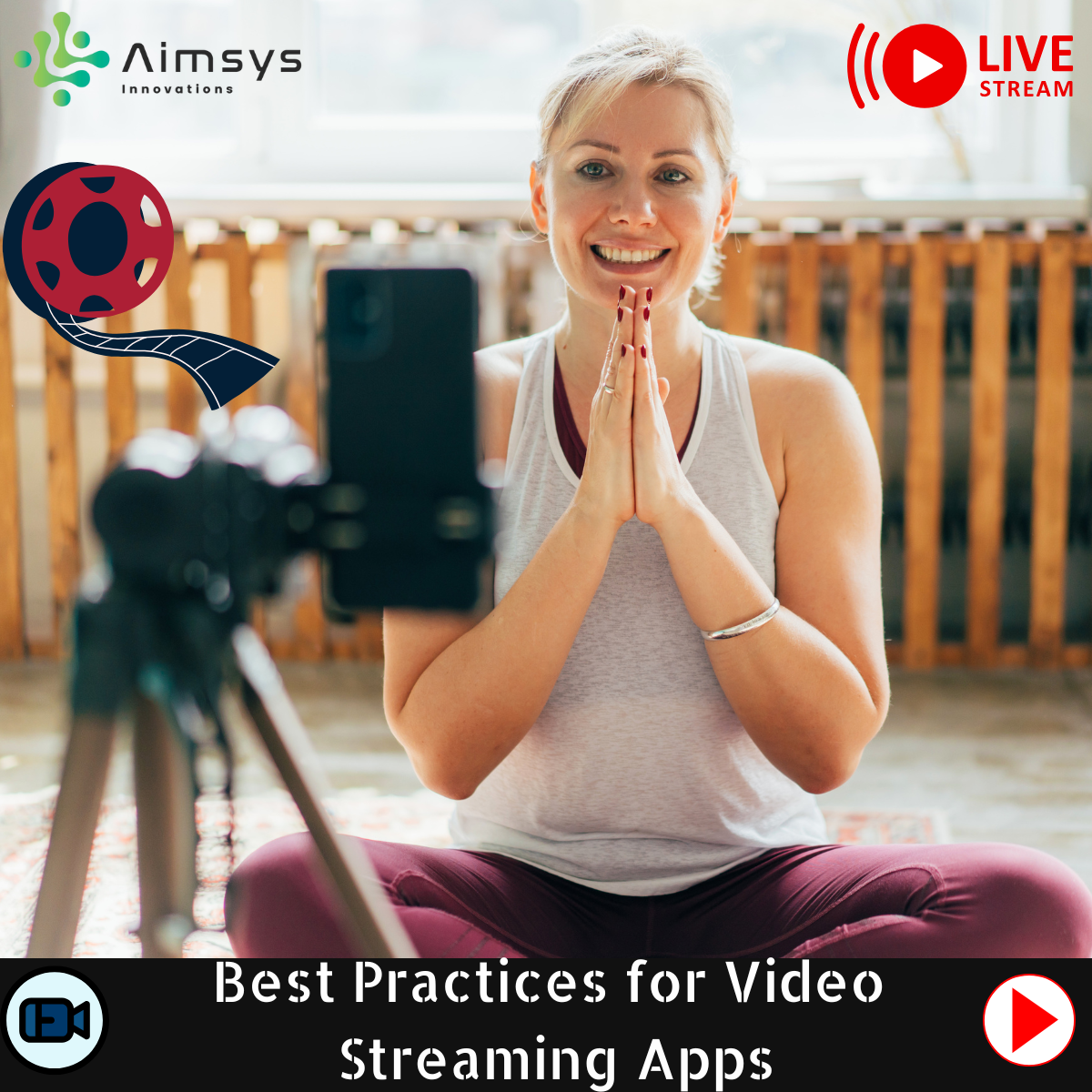Posted At: Aug 14, 2025 - 965 Views

🎥 How to Build a Scalable Video Streaming App: Architecture, Tech Stack & Best Practices
From Netflix and YouTube to e-learning platforms and live gaming, video streaming apps are dominating the digital space. But creating a scalable video streaming app isn’t just about playing videos—it's about managing infrastructure, performance, UX, and security at scale.
In this guide, we’ll walk you through the key components, technologies, and strategies you need to build a robust, scalable video streaming app.
🧭 1. Understanding the Streaming App Ecosystem
Before you write a line of code, it’s important to define the scope of your streaming app.
Types of Streaming Apps:
- On-demand streaming (e.g. Netflix, Hulu)
- Live streaming (e.g. Twitch, YouTube Live)
- Hybrid (e.g. sports apps with replays and live content)
- E-learning (e.g. Coursera, Udemy)
- Social video sharing (e.g. TikTok, Instagram Reels)
Each use case requires different tech considerations and trade-offs.
🧱 2. Core Components of a Video Streaming App
💻 Frontend (Client Side)
The app or web interface where users browse, play, and interact with videos.
⚙️ Backend (Server Side)
Manages video ingestion, storage, processing, user auth, recommendations, analytics, etc.
🔄 Video Pipeline
Handles encoding, transcoding, packaging, and delivery.
🌍 CDN & Caching
Delivers video content efficiently across the globe.
⚙️ 3. Architecture Overview
Here's a high-level view of how a scalable video streaming app works:
plaintext
CopyEdit
Video Upload / Live Feed
|
V
+------------------+
| Video Ingestion |
+------------------+
|
V
+------------------+
| Transcoding & ABR|
+------------------+
|
V
+---------------------+
| Storage (S3, GCS) |
+---------------------+
|
V
+--------------------------+
| CDN (Cloudflare, AWS) |
+--------------------------+
|
V
+-----------------+ +------------------+
| Frontend (App) | <-> | Backend API (Auth, Metadata, Analytics) |
+-----------------+ +------------------+
🧪 4. Key Features You’ll Need
✔️ User Features:
- Signup/Login (OAuth, email/password)
- Video library with categories
- Watch history, bookmarks
- Adaptive video playback
- Offline download (for mobile)
- Comments, likes, sharing
🎛 Admin Features:
- Upload and manage content
- Moderate user interactions
- View analytics
- Content scheduling
🧰 5. Tech Stack Suggestions
Frontend:
Platform | Tools |
Web | React, Next.js, hls.js |
Mobile | React Native, Swift, Kotlin |
Video UI | Video.js, Shaka Player, ExoPlayer |
Backend:
Functionality | Tech Stack |
APIs | Node.js, Express, Go, Django |
Authentication | Firebase Auth, Auth0, JWT |
Database | PostgreSQL, MongoDB, Redis |
Media Processing | FFmpeg, AWS MediaConvert |
Object Storage | AWS S3, GCP Storage |
CDN | Cloudflare, Akamai, CloudFront |
Notifications (Live/Push) | Firebase, OneSignal, WebSockets |
Real-time Chat/Comments | Socket.IO, Pusher |
🎥 6. Video Processing Pipeline
a. Video Ingestion
- File upload (chunked/multipart)
- Live input (RTMP/WebRTC/SRT)
b. Transcoding
- Convert videos into multiple bitrates and formats (H.264, H.265)
- Tools: FFmpeg, AWS Elemental, Bitmovin
c. Packaging
- Adaptive bitrate streaming formats:
- HLS (Apple devices)
- MPEG-DASH (Android & web)
d. Storage
- Use cloud object storage like AWS S3, GCP, or Wasabi
- Organize videos into folders by resolution, bitrate, or usage
📲 7. Adaptive Playback & UI
For smooth playback:
- Use HLS or DASH with ABR (Adaptive Bitrate Streaming)
- Players like video.js, hls.js, or Shaka Player adjust resolution based on network
UI Best Practices:
- Skeleton loaders for fast UI feedback
- Resume playback from last watched
- Smart search & filtering
- Show network quality indicators
🔐 8. Security & DRM
Content is valuable—protect it:
- Tokenized URLs: Prevent hotlinking.
- DRM: Use Widevine, FairPlay, PlayReady for paid content.
- Geo-blocking & Device Restrictions: Prevent abuse.
- HTTPS: Always encrypt data in transit.
📈 9. Analytics & Monitoring
Track user behavior and system performance:
Analytics:
- Google Analytics or Mixpanel for user insights
- Custom playback metrics: buffering time, drop-off, average watch time
Monitoring:
- Prometheus + Grafana for server health
- ELK Stack or Datadog for logs and alerts
- Sentry for frontend crash reporting
🌍 10. Scaling for Millions
Tips to make your app future-proof:
- Use Kubernetes or ECS for autoscaling services.
- Implement job queues (e.g. Celery, BullMQ) for background tasks like encoding.
- Separate services into microservices: auth, video processing, playback, analytics.
- Use edge caching and CDNs to handle peak traffic.
- Apply rate limiting & throttling to protect your APIs.
- Leverage database replication and caching (Redis, Memcached).
🧠 11. Final Thoughts
Building a scalable video streaming app is no small feat—it requires careful planning, the right tools, and cloud-native practices. But with the right foundation, you can support millions of users watching content from anywhere, anytime.
TL;DR Checklist:
- ✅ ABR streaming with HLS/DASH
- ✅ FFmpeg or cloud transcoding
- ✅ CDN + object storage
- ✅ Adaptive player + mobile support
- ✅ Robust backend with APIs, auth, analytics
- ✅ DRMs and token security
- ✅ Horizontal scalability with Kubernetes
